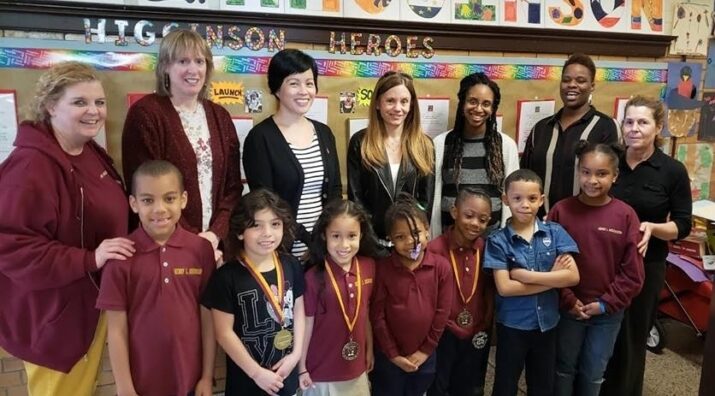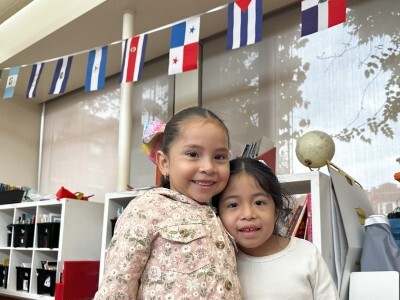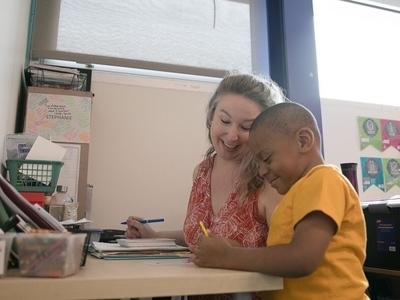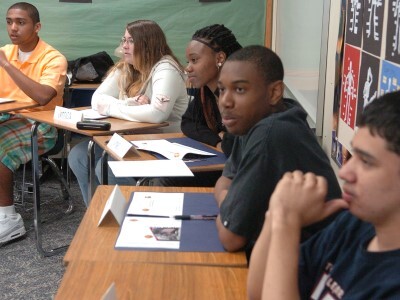Meet the Winners of the First Boston Public Schools’ Innovation Contest
Topics

Together, educators are doing the reimagining and reinvention work necessary to make true educational equity possible. Student-centered learning advances equity when it values social and emotional growth alongside academic achievement, takes a cultural lens on strengths and competencies, and equips students with the power and skills to address injustice in their schools and communities.
Higginson Elementary School in Boston addresses inequitable access to technology, especially for students with disabilities who need technological accommodations, with a tech-enabled project-based learning curriculum.
The design challenge proposed by the 2018 Boston Public Schools Innovation Contest was simple: If given 157 Chromebooks, what would your school do?
Preparing Our Youngest Students for the Jobs of the Future
What kinds of jobs will students in primary school have? How can we best prepare them for those jobs?
Some suggest that the best way to prepare students for the rapidly evolving job market is to embrace technology in the classroom at the earliest stages of a child's education. A 2015 EdSource article highlights that technology in classrooms is shown to be especially beneficial for English language learners and students with learning disabilities like dyslexia.
At Boston Public Schools (BPS), solving problems like this one was the motivation behind introducing the district’s first Innovation Contest. The BPS Office of Innovation not only looked for teams of teachers and school leaders to propose clear and concise redesign strategies for their classrooms but also wanted applicants to understand and convey the goals of closing the Innovation-Opportunity Gap and bringing their students closer to the jobs of the future.
The Henry L. Higginson School’s (Higginson Elementary) proposal presented just that, making it the winner of the 157 Chromebooks!
A Small but Mighty Team
Higginson Elementary is a small, high-needs K0–2 full inclusion school. In its sixth year, the school has a strong community of educators committed to meeting the diverse educational needs of its students. The students struggle globally and academically, with many students having extensive trauma histories and social-emotional wellness challenges. Twenty-five percent of students struggle with homelessness and most do not have access to technology outside of school.
According to principal Marie Mullen, the staff at the Higginson Elementary was motivated to apply for the Innovation Contest with the mission that:
“As early childhood educators of our youngest and most vulnerable students, the essential moral imperative that drives what we do each and every day is that all students deserve and are entitled to be engaged in influential learning experiences that are rich in building knowledgeable skills in preparation for lifelong learning.”
Their team’s redesign proposal detailed a plan to provide students with more equitable resources to move them closer to innovation opportunities.
To address the equity issue created by the lack of technology, especially for those students with disabilities who need technological accommodations to support their learning, the redesign team, consisting of teachers from every grade level, specialists, and support staff, developed a proposal to integrate technology with a new curriculum centered around project-based learning (PBL).
“How might we design learning experiences that enable student collaboration?”
The Higginson redesign team has seen that often times, younger, disadvantaged students are only provided with a “basic skills” approach to education.
The team proposed that a PBL curriculum with a large technological component is a powerful antidote to outdated teaching methods. The team decided to implement PBL as a way to engage students in either real-world problem solving or answering a difficult question over an extended period of time. The projects teachers will design will provide high-interest problems to solve that allow students to have agency and choice over their learning.
The Chromebooks will support more small-group work that allows personalized learning for the diverse student body. This includes English language learners, students with learning disabilities and individual education plans, and students who are on or above grade-level proficiency. Ideally, every student’s needs could be met individually while still developing the interpersonal skills that group work requires.
The Higginson Elementary’s redesign team intends to coach students as they create their own digital portfolios as a way to build their storytelling skills. The digital portfolios will follow the students as they advance through school.
The Game Plan

Higginson Elementary was awarded the Chromebooks in September 2018. The redesign team and its supporting teachers have laid out a three-year implementation plan, focused on incremental subject integration that ends with an expected full integration of project-based learning across all classrooms in 2021.
The students at Higginson Elementary are some of Boston Public Schools’ most diverse, both in terms of background and learning requirements. The staff includes some of the most thoughtful and devoted educators BPS has to offer. The school’s redesign plan considers all of their students and how to best afford them every opportunity they deserve. This combination has us all excited to see what might come next!




